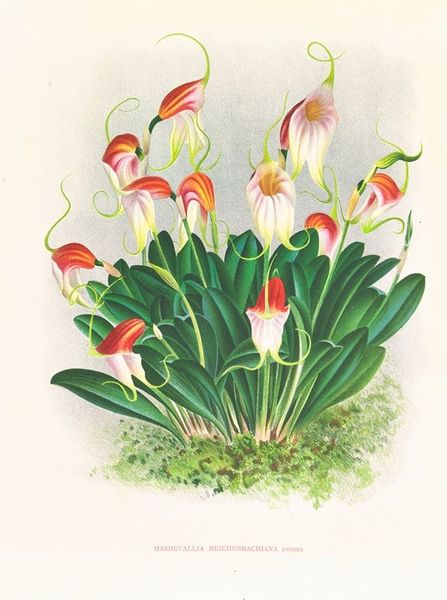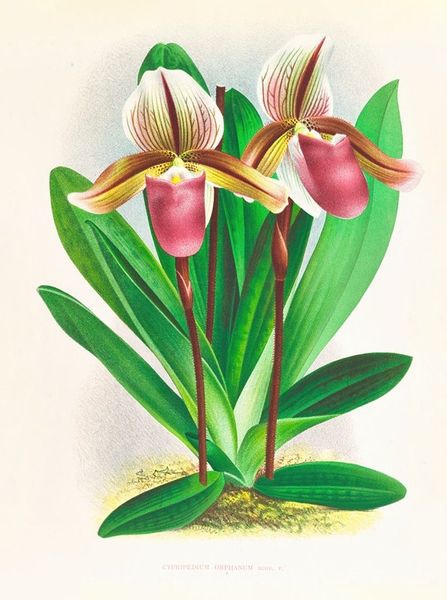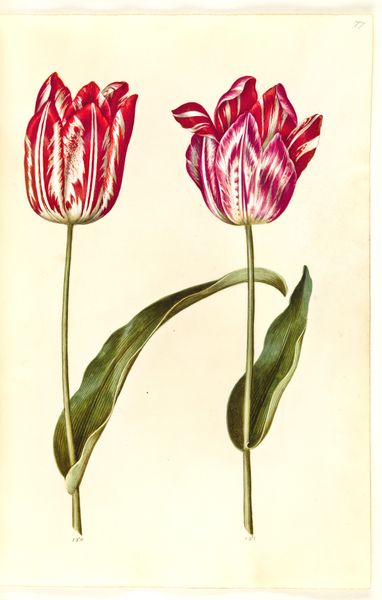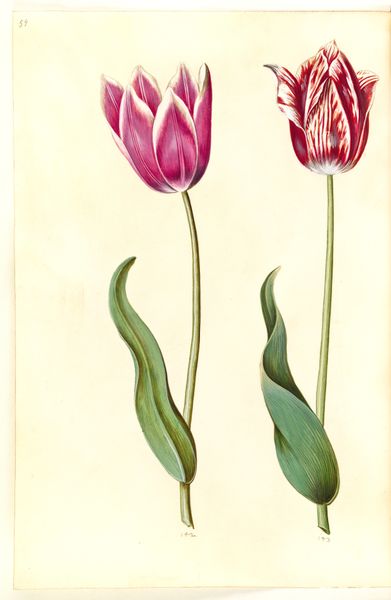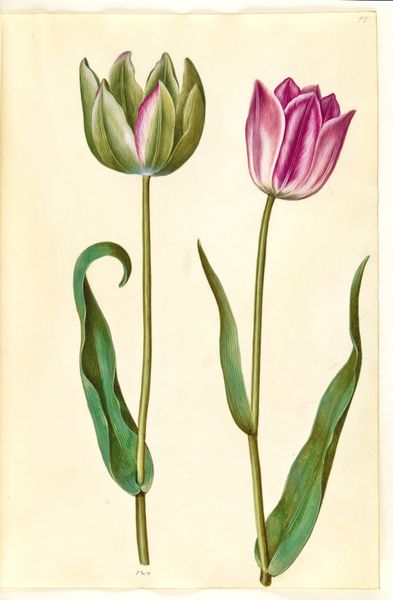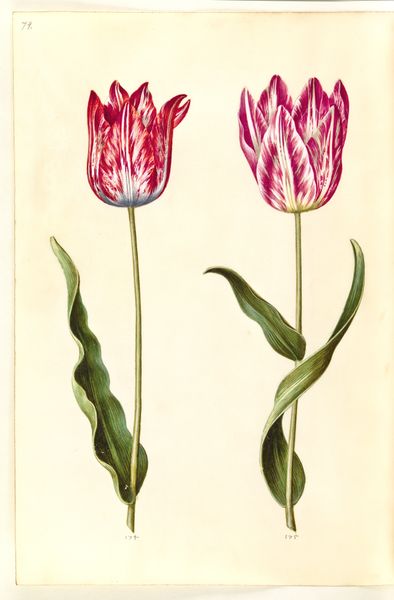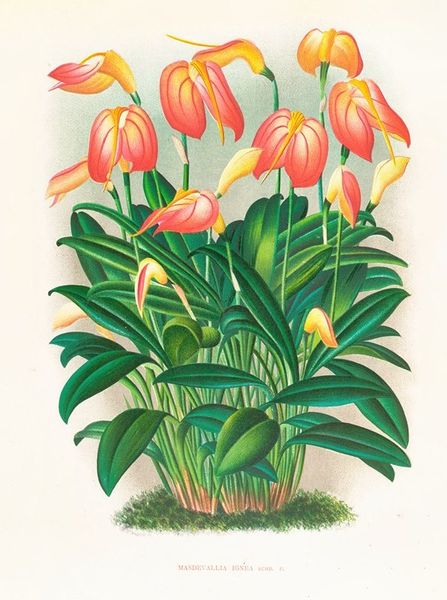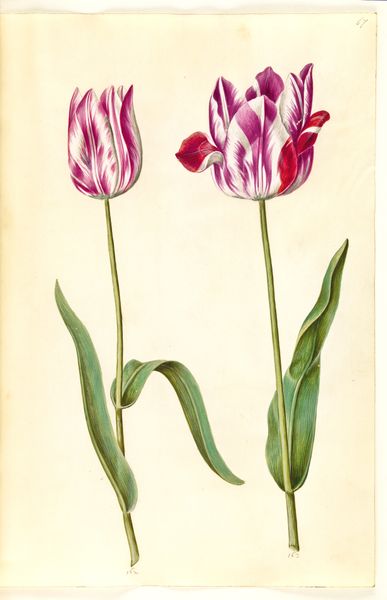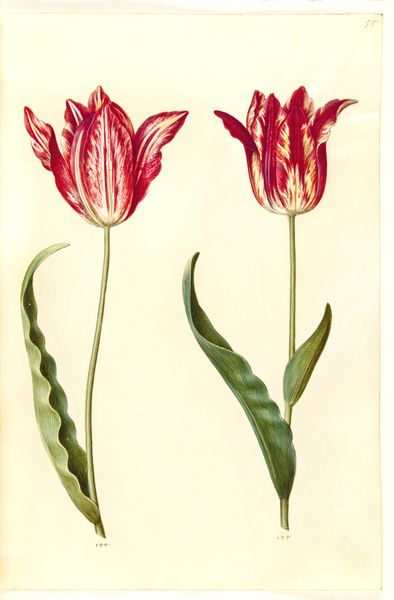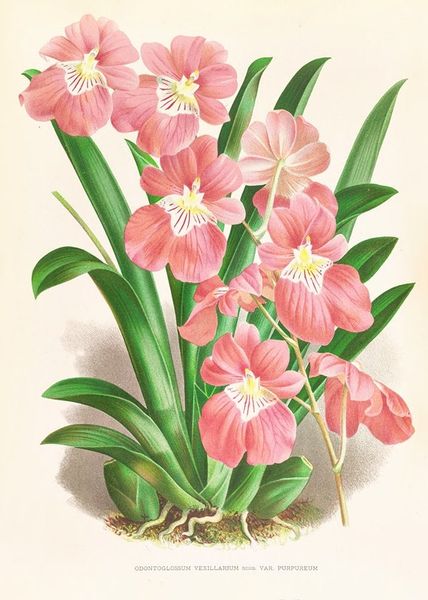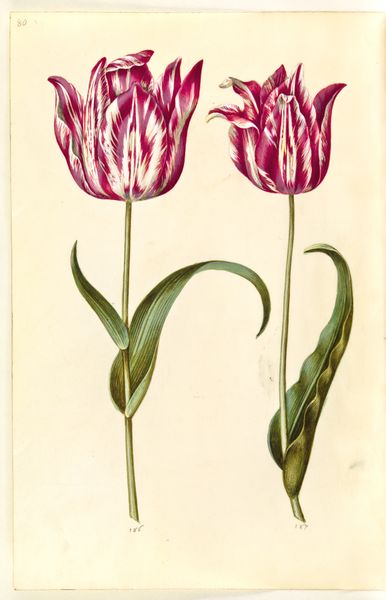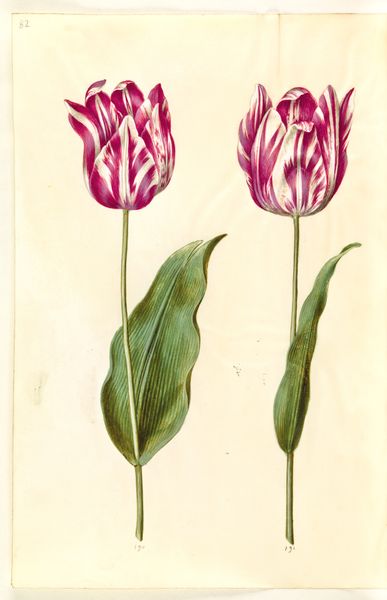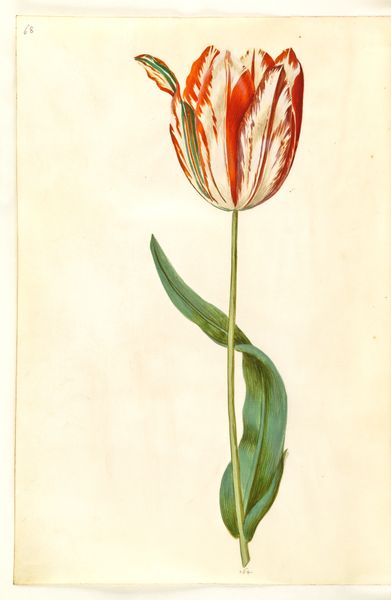
#
vegetal
#
pollination
#
botanical illustration
#
food illustration
#
floral photography
#
green background
#
botanical photography
#
watercolour illustration
#
botanical art
#
flower photography
Copyright: Public Domain: Artvee
Editor: Here we have an illustration, likely watercolor, of "Masdevallia lindeni var grandiflora" dating somewhere between 1885 and 1906, by Jean Jules Linden. The pink blossoms, standing so erect, almost have a manufactured quality to them, like something made from painted porcelain. What strikes you about this image? Curator: Well, considering its historical context, I immediately think about the means of production for this image. How many iterations were needed for printing purposes? And what labor was involved in its creation, not just by Linden, but also by those involved in the printing and distribution? The illustration highlights human consumption, because the final image ends up, in many instances, for sale in industrial society as either decoration or information. Editor: So you're saying that we should consider not only the final piece, but the economic structure that enables its very existence? Curator: Precisely. Think about who commissioned it. What audience was targeted? Botanical illustrations such as this fueled the burgeoning fields of science and global trade, but also were aestheticized and commodified. In its time, its initial value would have come from the industrial processing which allowed for the mass duplication, enabling further consumption of exotic plant life for personal and professional gain. Editor: It's fascinating to think of this beautiful botanical art as participating in systems of labor, consumption and exchange! It adds layers of complexity I hadn’t initially considered. Curator: Right? I feel like I see the tendrils of global capitalism right here in this botanical study.
Comments
No comments
Be the first to comment and join the conversation on the ultimate creative platform.
